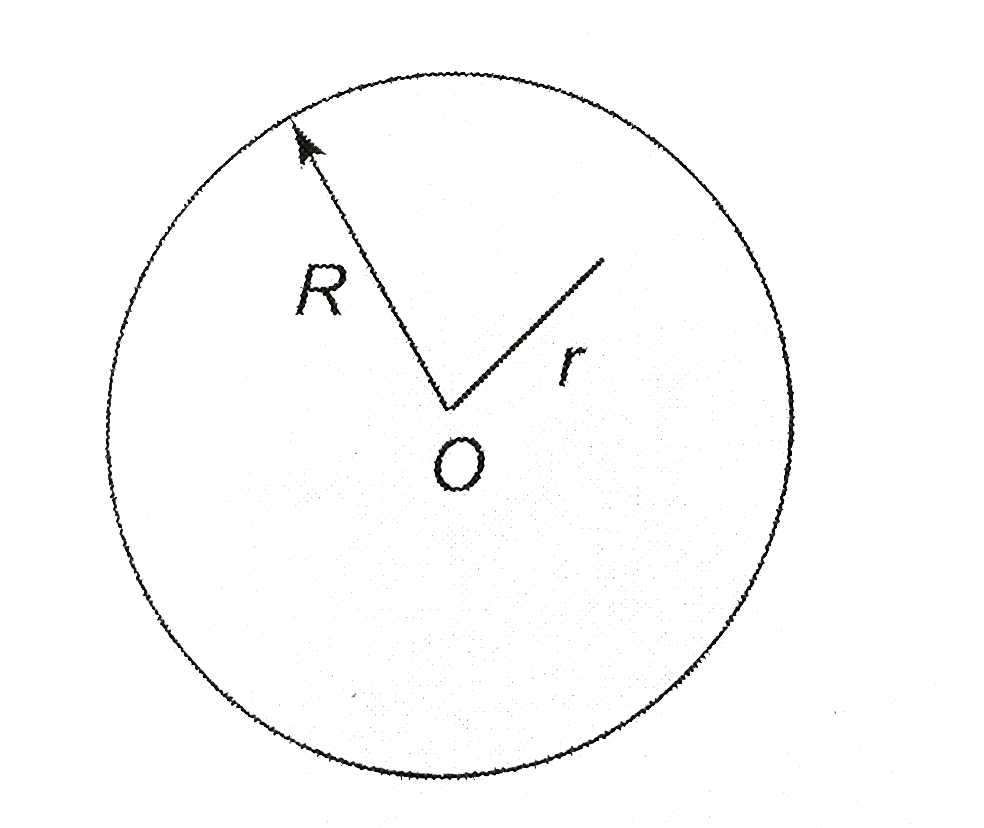A cyclist rides along a circular path in a horizontal plane where the coefficient of friction varies with distance from the centre O of the circular path as μ=μ0(1−rR) where R is the maximum distance up to which the road is rough
Find the radius of the circular path along which the cyclist can ride with maximum velocity. What is this maximum velocity ?
Step by step video & image solution for A cyclist rides along a circular path in a horizontal plane where the coefficient of friction varies with distance from the centre O of the circular path as mu = mu_(0)(1-(r)/(R)) where R is the maximum distance up to which the road is rough Find the radius of the circular path along which the cyclist can ride with maximum velocity. What is this maximum velocity ? by Physics experts to help you in doubts & scoring excellent marks in Class 11 exams.
Topper's Solved these Questions
- BOOK - NN GHOSHCHAPTER - CENTRIPITAL AND CENTRIFUGAL FORCESEXERCISE - Exercises (A)18videos
CENTRIPITAL AND CENTRIFUGAL FORCES
- BOOK - NN GHOSHCHAPTER - CENTRIPITAL AND CENTRIFUGAL FORCESEXERCISE - Exercises (B)36videos
CENTRIPITAL AND CENTRIFUGAL FORCES
- BOOK - NN GHOSHCHAPTER - CALORIMETRYEXERCISE - All Questions28videos
CALORIMETRY
- BOOK - NN GHOSHCHAPTER - COMPOSITION AND RESOLUTION OF VELOCITIESEXERCISE - Exercise25videos
COMPOSITION AND RESOLUTION OF VELOCITIES
Similar Questions
A cyclist rides along the circumference of a circular horizontal plane of radius R, with the friction coefficient μ=μ0(1−rR), where μ0 is constant and r is distance from centre of plane O. Find the radius of the circle along which the cyclist can ride with the maximum velocity, what is this valocity?
 View Solution
View SolutionA car is taking turn on a circular path of radius R. If the coefficient of friction between the tyres and road is μ, the maximum velocity for no slipping is
View Solution
Knowledge Check
- Question 1 - Select One
A cyclist rides along the circular path of a circular horizontal plane of radius R, the firctional coefficient being dependent only on distance r from the centre O of the plane as μ=μ0(1−rR), where μ0 is a constant.
Find the radius of the circle such that the cyclist can ride with the maximum velocity.ARBR2CR3DR4 - Question 2 - Select One
A cyclist rides along the circular path of a circular horizontal plane of radius R, the firctional coefficient being dependent only on distance r from the centre O of the plane as μ=μ0(1−rR), where μ0 is a constant.
What is the cyclist's maximum velocity ?A√μRgB2√μ0RgC12√μ0RgD√2μ0Rg - Question 3 - Select One
The maximum speed of a car on a curved path of radius 'r' and the coefficient of friction μk is
Av=√μkgrBv=√μkgrCv=√grμkDv=√1μkgr
The maximum speed of a car on a curved path of radius 'r' and the coefficient of friction μk is .
View SolutionA car is negotisting a curved road of radius R . The road is banked at an angle theta. The coefficient of friction between the tyres of the car and the road is μs . The maximum safe velocity on this road is:
View SolutionWhen the road is dry and the coefficient of friction is μ, the maximum speed of a car in a circular path is 10 m/s. if the road becomes wet and μ'=μ2, what is the maximum speed permitted?
View SolutionA car is negotiating a curved road of radius R. The road is banked at an angle θ. The coefficient of friction between the tyres of the car and the road is μs. The maximum safe velocity on this road is
View SolutionA car is negotisting a curved road of radius R . The road is banked at an angle theta. The coefficient of friction between the tyres of the car and the road is μs . The maximum safe velocity on this road is:
View Solution
